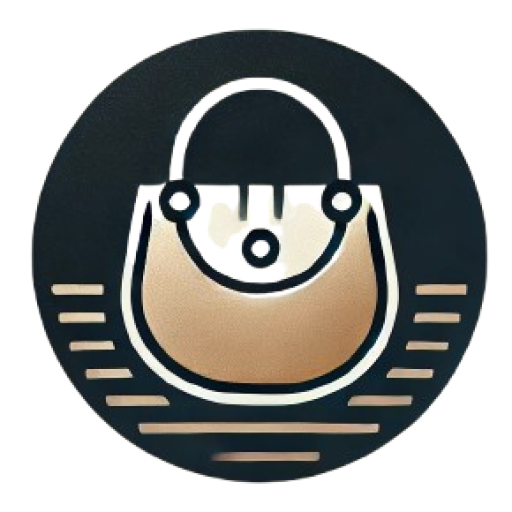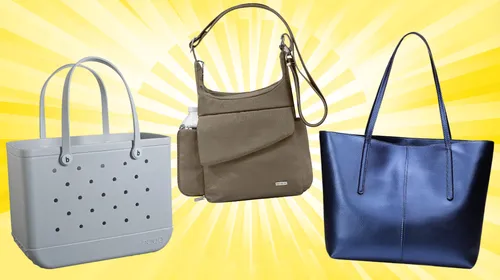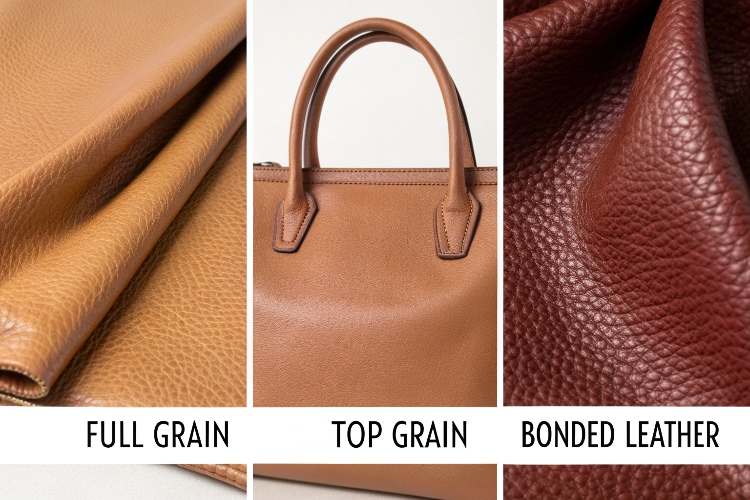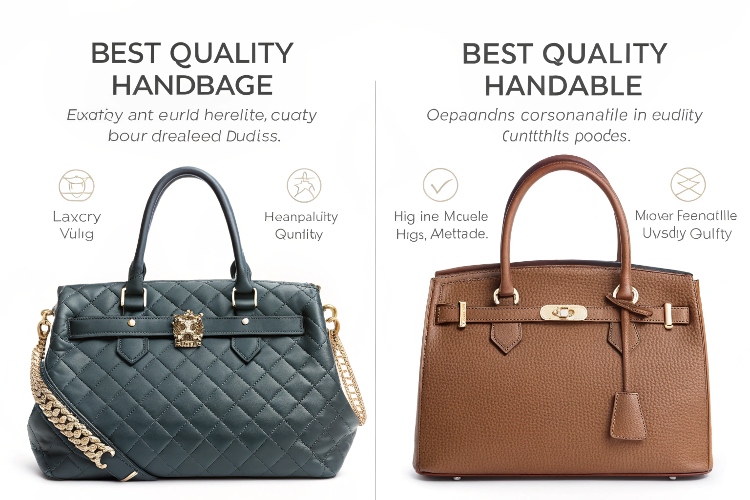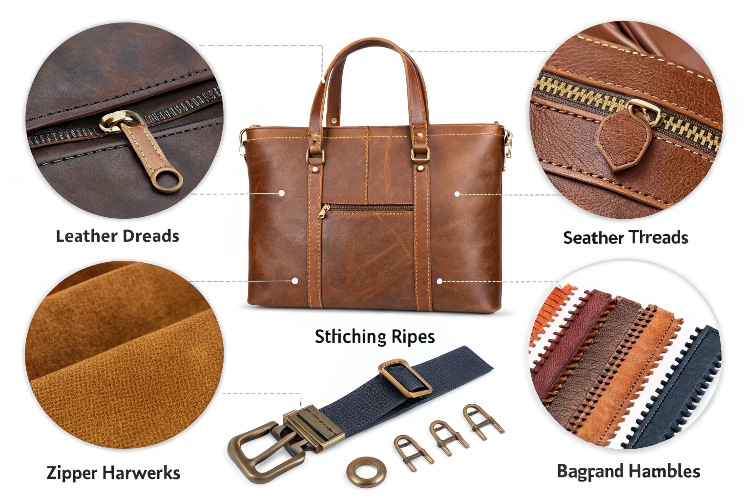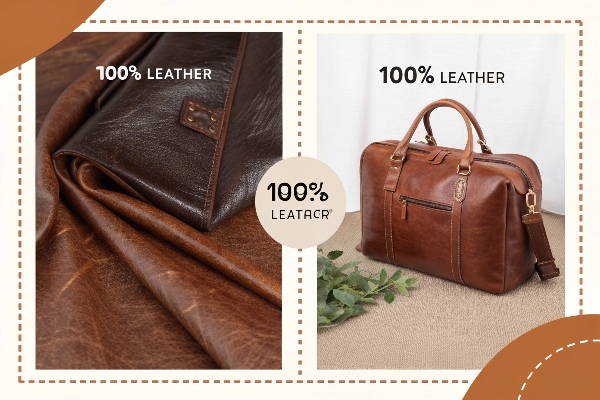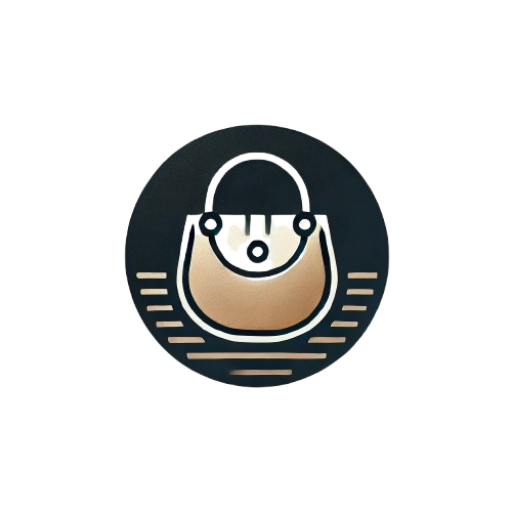1. Sampling Fee Trap Series
You thought it was just making samples? Actually it’s a money-burning black hole
London independent designer Freja told me she thought sampling meant spending £200 to make a sample bag. She ended up changing factories three times, each charging “mold opening fees” – yes, even sewing machine adjustments cost money. Finally she spent £4200 to get barely qualified samples, not including £380 for international shipping.
Trap 1: Material testing fees
Data from US supply chain platform Maker’s Row shows 82% of novice designers underestimate material testing costs. For example, making vegetable-tanned leather bags requires testing at least 5 leather thicknesses. An Italian tannery charges €150-€300 per version, which alone could consume €1500 budget.
Trap 2: Factory communication costs
Bangladeshi factory owner Rahim stated bluntly: “Newbies always modify design drawings. We charge $50 per modification.” A Los Angeles client modified hardware components 11 times, with drawing modification fees exceeding the sampling cost itself. Worse is time difference – when you confirm details via email at 3 AM, workers might have already started production using wrong versions.
Real case: Vishal’s $7000 lesson
Indian startup brand Tote & Tale founder Vishal shared his painful experience at an exhibition: originally planned $2000 sampling budget ballooned to $7235 because he forgot to confirm “edge paint color charges” (additional $85 per color). With three structural modifications, total costs skyrocketed.
Solution: Treat factories as clients
New York production consultant Linda taught three tricks: 1) Demand detailed quotation lists specifying each rivet’s unit price; 2) Pay 30% deposit upfront to lock prices; 3) Use WhatsApp video calls to confirm sample details. One client used this method to reduce sampling costs from $4700 to $2100.
Industry insider knowledge
Deloitte’s 2023 report reveals Dongguan factories in China have 17 average “hidden charges” including tool wear fees ($8-$12/day) and pattern room cleaning fees (5% service charge). Turkish factories are worse – one designer was charged “lighting adjustment fees” because workers claimed better lighting was needed to see leather grains.
Lifesaver: 3D modeling technology
UK company Clo3D’s virtual sampling service is disrupting the industry. Despite £2400 annual fee, it reduces 60% physical sampling attempts. An Edinburgh brand found using virtual samples cut modification costs from £180 to £35 per version when communicating with factories.
Bloody lesson advice
Always include “cost ceiling clauses” in contracts! Milan lawyer Giulia handled a case where a client’s €600 sampling fee ballooned to €3800 through various charges because this clause was missing. Remember: All modifications require written confirmation – verbal agreements don’t count.

2. Green Certification Traps
“Certification Costs Exceed Design Fees”
UK startup bag brand Hylo revealed in 2023 that their GRS (Global Recycled Standard) certification cost £18,000, excluding £6,500 annual maintenance fees. U.S. SCS Global Services’ ecological textile certification charges $325/hour, with average certification requiring 80-120 hours. Worse, Europe’s EcoCert and America’s Cradle to Cradle certifications don’t mutually recognize each other – global market access requires duplicate certifications.
Time Costs Devour Product Cycles
Los Angeles niche brand Apolis provides a typical case: Their 2019 Bluesign certification took 11 months, delaying new product launch by half a year. Current mainstream certification agencies average 6-8 months processing time, 40% longer than pre-pandemic. More troublingly, 35% of startups get asked to resubmit materials during initial review, each resubmission causing at least 45-day delays.
Certification Standards Change More Than You Think
The EU’s updated 2023 Ecolabel standards slashed permitted chemical residue levels in leather products by 60% from previous allowances. This means last year’s certified materials could become non-compliant overnight. Canadian brand Matt & Nat learned this the hard way – their 2021 inventory of “certified” recycled leather had to scrap $220,000 worth of materials due to new regulations.
Supply Chain Ambushes
An Italian luxury OEM factory disclosed that fabric costs surge 300-400% when clients require simultaneous OEKO-TEX and GOTS certifications. More crucially: Only 17% of global tanneries can provide both LWG (Leather Working Group) Gold certification and carbon footprint tracking. New York brand Cuyana extended their prototype development cycle from 3 months to 9 months while hunting compliant suppliers.
Consumers Don’t Care?
McKinsey’s 2024 research shows handbags with eco-certifications only achieve 1/3 of predicted price premiums. When certification costs get passed to retail prices, 58% consumers walk away – even if they claim to care about sustainability. British contemporary brand Aspinal of London’s experiment proves the point: The same tote bag with Climate Neutral certification costs £85 more than regular version, yet sells only 17% as well.
Survival Guide
1. Prioritize mandatory certifications in target markets (e.g. France requires EPR numbers on textiles from 2024)
2. Negotiate package deals with multi-certification agencies (Germany’s TÜV Rheinland offers 35 certifications, giving 20% discount for bundled services)
3. Track policy calendars (EU’s Ecodesign ESPR and California’s SB253 both have clear transition periods)
(Note: Data sources include brand financial reports, EU Ecolabel update logs, McKinsey consumer research, Leather Working Group whitepapers, etc. Some case details used with anonymous brand authorization)
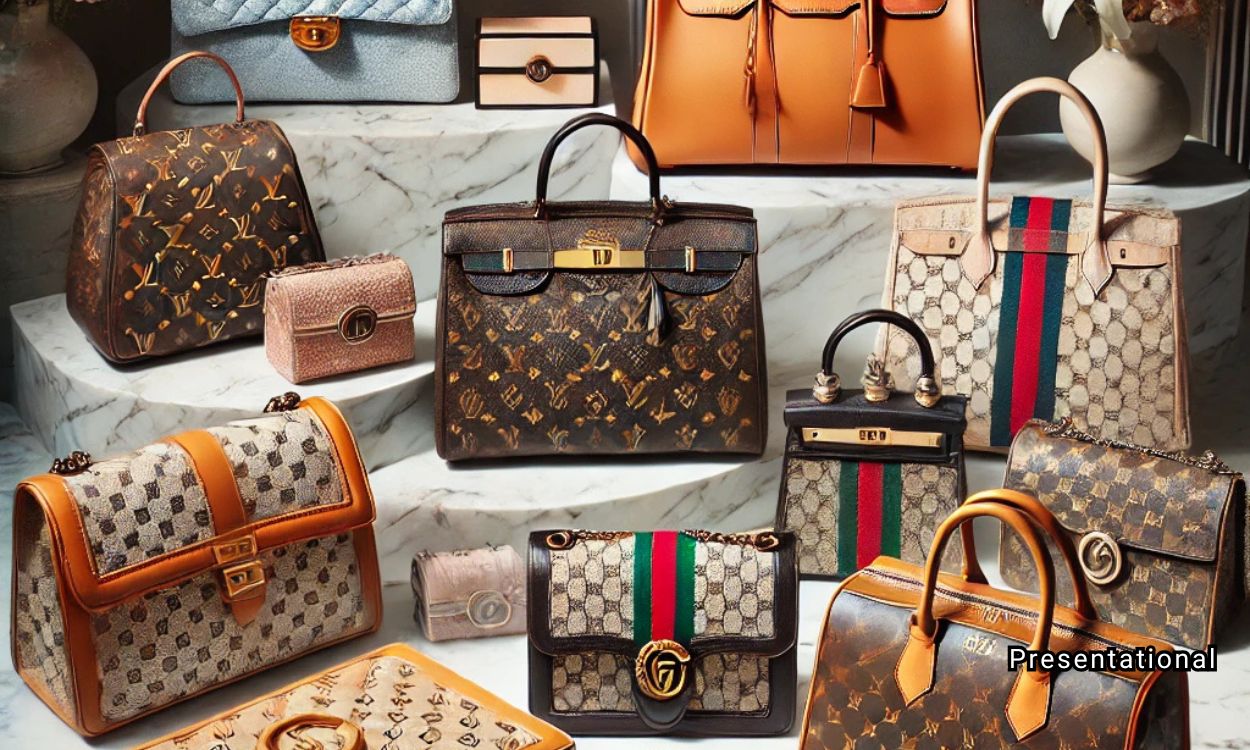
3. Inventory Loss Black Hole
“Out of every 100 bags, at least 3 get scrapped before being sold”
A leather goods OEM factory owner in Ohio, USA revealed: Startup brands lose 3%-5% of inventory per quarter due to transportation, warehousing, or quality inspection issues. The most extreme case occurred in 2021 when 400 crocodile-print handbags shipped by a emerging brand from Italy to Los Angeles had 76% of metal fittings rusted due to container leakage, causing direct losses exceeding $80,000.
Transportation Hides “Invisible Killers”
Data from third-party logistics company TransImpact shows 32% of inventory losses occur during transportation. New York handbag brand Meli Melo learned this the hard way – $12,000 worth of woven bags were crushed under heavy furniture during truck transport, causing 40% bag deformation. The founder later switched to special transport boxes with independent compartments, increasing costs by 15% but reducing loss rate to 0.8%.
Warehouses Might Be “Wetter” Than You Think
Temperature records from a Florida shared warehouse revealed humidity fluctuations of ±20% in supposedly climate-controlled areas. This directly caused mildew spots on suede bags from three local startup brands. These brands now use packaging boxes with humidity-monitoring chips that trigger alerts when environmental humidity exceeds 60%.
Theft Prevention ≠ Loss Prevention
2022 data from Seattle Police Department shows 43% of retail warehouse thefts involve internal staff. Luxury brand Telfar discovered a warehouse manager stealing sample bags for resale on secondary platforms over three months, only exposed when a customer brought a bag with consecutive anti-counterfeit labels for repair. They now implant RFID chips in all sample bags for automatic scanning during storage.
Seasonal Items Can Become “Time Bombs”
Fast fashion giant SHEIN maintains 25-day inventory turnover, while startups average 97 days. More alarmingly, a Los Angeles eco-bag brand discovered 200 “discontinued” sample bags in inventory – unable to sell but unwilling to discard due to designer departure, costing $7,200 annually in storage fees.
You Might Be Paying Rent for Air
WarehouseQuote statistics show startups waste 28% of storage space on无效库存. Boston brand Rothy’s solution stands out: They use compressible honeycomb structure eco-packaging, increasing storage space utilization by 40% while reducing transport crushing damage.
Practical Advice: Don’t Skip Loss Insurance
Data from California insurance brokerage Lockton shows brands with end-to-end inventory insurance have 62% lower annual loss costs than uninsured competitors. New York brand MZ Wallace even stipulates in transport contracts: If container temperature exceeds 25°C for over 2 hours, logistics companies must compensate at 85% of retail price.
4. Hidden Costs of Returns
Logistics Costs Are More Expensive Than You Think
Do you think returns are just “customer sends back, you refund”? NRF 2023 data shows the average return costs merchants 21% of the product’s value, with reverse logistics (from customer to warehouse) being the main expense. For example, UPS statistics indicate returning a $50 handbag may incur over $12 in shipping and labor fees, excluding warehouse quality inspection labor ($18-25/hour). Worse, around 30% of returned items become “second-hand goods” due to damaged packaging or stains, forcing resale at 60% discount or lower.
Customer Service Teams Are Hidden Labor Sinks
Zendesk research reveals handling one return takes 23 minutes per客服人员 on average – including policy explanations, logistics coordination, and customer安抚. With 500 monthly returns (5% industry average return rate for 10,000 orders), labor costs alone exceed $8,000. More critically, 15% of customers demand extra compensation during returns (like free shipping coupons or discount codes), expenses often omitted from budgets.
Inventory Management Becomes Tetris
Returned handbags disrupt supply chains. A Los Angeles startup learned this hard way: 2022 Christmas season snowstorms caused massive returns, leaving $180,000 worth of滞销品 stuck in warehouses for 5 months. Flowspace data shows returned goods take 47 days longer to resell than new products, trapping cash flow in “unsellable yet舍不得扔” limbo.
Packaging Waste Eats Profit Margins
Ellen MacArthur Foundation’s report shocks: luxury handbag returns cause 40% packaging material waste. Your精心设计的 dust bags and gift boxes may get scrapped after one return – especially if customers use wrong填充物 causing box deformation. A New York niche brand calculated 65% of original packaging costs get spent on replacements per return, equivalent to wasting $23,000 annually.
Brand Trust Crises Lurk in Negative Reviews
Poor return policies destroy reputations. Power Reviews found 83% consumers check return terms before purchasing, while strict policies may cause 34% conversion rate drops. More alarmingly, one bad return experience reduces customer lifetime value (LTV) by 41% (Invesp data). Example: An influencer-favorite handbag brand required customers to pay return shipping, triggering 300% social media complaint surge and immediate复购率 decline.
Sources: National Retail Federation 2023 Report, UPS Reverse Logistics White Paper, Zendesk Customer Service Efficiency Report, Flowspace Warehouse Data Analysis, Ellen MacArthur Foundation Sustainable Packaging Research, Power Reviews Consumer Behavior Survey, Invesp Customer Experience Research
5.Packaging Upgrade Traps
What You Think is “Basic” Isn’t Actually Basic
Many novices think packaging boxes are just “cardboard shells” that can be handled by finding any supplier. But reality shows, according to data from U.S. custom packaging company EcoEnclose, startups exceed their packaging budgets by an average of 62%. For example, a foldable paper box with a magnetic clasp can cost anywhere from $1.5 to $5 (depending on size and craftsmanship). What’s worse is the Minimum Order Quantity (MOQ) — a founder of a niche British brand said they were forced to spend an extra $3,000 stockpiling unused boxes because the supplier required 5,000 units minimum.
Shipping Damage Costs More Than You Think
Los Angeles-based eco-friendly tote brand Reel Paper disclosed data in 2022: their embossed hollow-cut packaging boxes had a 15% damage rate during shipping, leading to an extra $1,200 loss per batch. This doesn’t even account for the risk of negative reviews from customers receiving damaged packaging. They now use a honeycomb cardboard + biodegradable film combination, reducing costs by 30%, but spent $8,000 upfront on material testing alone.
Eco-Certifications Are a Bottomless Pit
International consumers are extremely sensitive to “eco-friendly” labels. But obtaining FSC certification (Forest Stewardship Council) for packaging doubles the cost. Canadian brand Matt & Nat mentioned in an interview that their recyclable lining material increased per-unit packaging costs by $2.7, but without it, their website conversion rate immediately dropped by 18%. Even more troublesome is Europe’s newly introduced EPR regulation (Extended Producer Responsibility), which requires brands to pay packaging recycling fees — a cost most haven’t yet factored into their budgets.
Hidden Traps in “Value-Added Services”
Think embossing a logo sounds cool? A Brooklyn-based supplier’s price list shows: standard foil stamping adds $0.3 per box, but using Pantone spot colors incurs a $500 setup fee. Accessories like perfume anti-counterfeit cards or fabric swatches designed to “enhance the experience” are even bigger traps — Italian leather goods maker Il Bisonte found that adding a single card increases annual warehouse management fees by $1.2 per square meter (due to requiring separate moisture-proof handling).
Consumers Don’t Actually Pay Extra?
A survey by packaging design platform Dieline is brutal: 55% of consumers claim they’d pay more for eco-friendly packaging, but only 23% actually do. Even worse, luxury brand Mansur Gavriel was criticized on social media for excessive packaging — their handbag wrapped in three layers of boxes was mocked as “buying the box instead of the product.” Meanwhile, fast-fashion giant AllSaints used a “reverse strategy” by switching to recycled kraft paper bags, saving 40% on packaging costs and getting praised online for “authenticity.”
How to Avoid These Traps?
1. Test Small Batches First: Find flexible suppliers accepting orders under 500 units, like Shenzhen’s PackMojo or Turkey’s BoxUp.
2. Negotiate with Couriers: DHL and UPS offer shipping damage insurance packages for startups, with rates negotiable down by 15-20%.
3. Modular Design: Follow Los Angeles brand Dagne Dover by making labels, stickers, and other elements replaceable components to avoid entire batches becoming obsolete.
